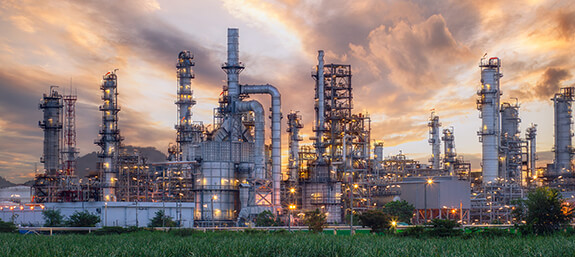
How to Quantify Leaks with Optical Gas Imaging (OGI)
March 30, 2021
By: Terence Trefiak
The role of OGI in leak detection and repair (LDAR) is growing, but before you add this technology to your LDAR program, you have to address the elephant in the room – quantification.
Myth #1: You can’t quantify a leak with OGI.
This is a common LDAR industry belief – the Method 21 Correlation Equations are the best way to measure a leak. However, this method is not a quantitative emission rate. It’s an estimate based on a point source concentration measurement. What the OGI method can tell us that the Method 21 Correlation Equations cannot, is the magnitude of the leak. OGI does a much better job of identifying larger, more problematic leaks.
Methods to Quantify Leaks with OGI
Because the equipment has to be passed over each individual component, this technique can be time consuming.
$••
It’s difficult to take a single point concentration reading across a large leak interface. Most Method 21 devices also have a maximum (pegged) range of 100,000 ppm, so if the concentration is more than that, you cannot read it accurately.
Bagging tests can take a lot of time to set up and more time to run – especially for small leaks.
$$•
It can be difficult to capture all the leaking gas depending on the type and location of the leaking area.
The benefit of OGI estimation is that it provides the facility with a level of severity regarding the leak – very small, small, medium, large, or very large. This data allows them to prioritize which leaks should be repaired first.
$••
These estimates can be quite accurate when compared to actual quantification and can be done at no additional cost.
Using OGI estimates is far more accurate than the ppm correlation – especially with medium to large leaks.
It can take time to properly set up the camera and position it fairly close to the emission source. The source needs to be clearly visible with a good background, which is not always possible.
$$•
In our experience, this method can provide an accurate rate, but results can vary based on the leak scene – distance, background, etc.
*The manufacturer of this device (Bacharach) has discontinued this product, but there are more in development.
The method is efficient, but the sensors are prone to drift/damage and need to be calibrated often with an experienced technician that can identify malfunctions.
$$•
This device is the most accurate technology available to measure a hydrocarbon gas leak or vent.
Myth #2: Some leaks are smaller, some are bigger, but they are all roughly the same size.
If you’re only using the Method 21 Correlation Equations, then this is basically true. Because of the limitations of using the correlation equations, there is not much difference between a small and large leak. But in reality, there can be a massive difference. It is common knowledge in LDAR that a minority (10-20%) of larger leaks make up the majority of the leak volumes (80-95%), so it’s important these large leaks be found and fixed as soon as possible.
The table below shows the calculated leak rates based on the Method 21 correlation method, but then compares the actual leak rates measured with a Hi-Flow sampler. From the data it’s clear – the Method 21 correlation method is severely underestimating leak rates, especially for leaks with high ppm readings.
Reading
Calc (Table 2-10) lbs/hour
How Montrose Can Help
Since 2007 Montrose Environmental Group has specialized in accurate leak and vent rate measurement. We use a combination of OGI detection and quantification with actual flow rate measurement using Hi-Flow Samplers. We have the most OGI cameras in North America, and we pair them with the best trained technicians in the LDAR industry.
 Terence Trefiak
Terence Trefiak
VP, LDAR Canada
Terence brings over 19 years of industry experience to the Montrose team where he currently serves as Vice President of LDAR, Canada. He is an expert in fugitive emission management and specializes in Optical Gas Imaging for GHG and LDAR compliance.


